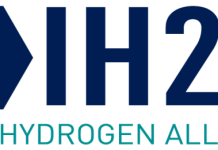This month, our columnist examines a burning issue – the rising emissions of Greenhouse Gases and the consequent global warming that is threatening to spiral out of control. At COP24 in Poland, consensus was reached on the rules for reporting GHG emissions, which should help in monitoring the progress of climate mitigating efforts. But a lot more needs to be done urgently and time is running out.
In discourses about various challenges confronting the human race, climate change invariably takes a back seat. CO2 emissions in USA increased by 3.4% in 2018, the largest YOY increase in more than 2 decades barring 2010. This is alarming because it challenges the belief that equipped with clean energy technologies like renewable power, batteries and electric vehicles, we have been able to decouple emissions from economic growth. Another piece of bad news is that transportation has overtaken power generation as the largest source of Greenhouse Gas (GHG) emissions in USA. With cars becoming cheaper and increasingly affordable in our country, we cannot but be concerned on the likely outcome of increased emissions.
India’s Emissions
With 6.5% share of the global emissions, we are the third largest GHG emitter behind USA and China. Energy sector’s share of the emissions is a whopping 68%. Industry and agriculture accounts for 20% and 9% respectively, with waste management making up the balance 3%. Within the energy sector, electricity generation accounts for 77%. This is expected to decline significantly in the next decade thanks to the ambitious goal of increasing the share of renewables in the fuel mix to 40% by 2030. India’s emissions grew annually by 5.6% from 2005 to 2013, the most recent year for which reliable data are available. Per capita emissions also grew 4% annually during this period. Our commitment under Paris Agreement is to reduce the GHG emission intensity of GDP by 33-35% below 2005 levels by 2030. Emission reporting is not mandatory for companies in India, as in China. The few companies that report voluntarily follow varied methodologies. In the absence of reliable data based on unified methodology, it is difficult to put a policy framework in place and monitor the progress.
COP24
Held in December 2018 at Katowice, Poland, COP24 had one major success – an agreement on the “Rulebook” for putting the 2015 Paris Agreement into practice. The Paris agreement in 2015 saw 195 of the world’s governments commit to prevent climate change by limiting global warming to well below 2 degrees Celsius. The “Rulebook”, a detailed operating manual, needed for the Paris Agreement to enter into force in 2020, covers a number of questions, such as how countries should report their GHG emissions, contributions to climate finance, and what rules should apply to voluntary market mechanisms like carbon trading. A key section of the “Rulebook” is Article 13, which covers transparency. It describes what, how often and with which details should countries report on their mitigation efforts.
New Rules
The new reporting rules that kick in for all countries from 2024 is a major transformation of biannual reporting requirements. Presently, biannual reporting is required only for 44 developed countries listed in the annexures of the UN Framework Convention on Climate Change (UNFCCC). The new rules will ensure that all countries are held to proper standards and make it difficult to wriggle out of their commitments.
Under the new rules, GHG emissions must be reported no more than two years in arrears. Reporting in 2024 would cover the years at least up to 2022. Countries will have to report emissions using “common reporting tables” and a “common tabular format” to be developed by the technical body SBSTA (Subsidiary Body for Scientific and Technological Advice).
One important detail of the COP24 agreement commits countries to report emissions in “CO2 Equivalents”. Some critics are of the opinion that this is a retrograde step. They explain that short and long-lived GHGs affect the climate in fundamentally different ways. Lumping them all together and using a single metric of “CO2 Equivalent” seriously misrepresents the climate impact of methane.
Science-Based Targets
Targets adopted by companies to reduce greenhouse gas (GHG) emissions are considered “science-based” if they are in line with the level of decarbonisation required to keep global temperature increase below 2 degrees Celsius compared to pre- industrial temperatures, as described in the Fifth Assessment Report of the Intergovernmental Panel on Climate Change (IPCC). Science Based Targets (SBT) quickly became the gold standard for companies that aspired to be world leaders in climate change. It is built on the concept that corporate targets should be based on what is required than what feels achievable and proposes an egalitarian approach to reducing emissions.
However, SBT has lost some of its aura, following the recent publication of the Special Report by IPCC, which examines the impact of global warming of 1.5 degrees Celsius above pre-industrial levels. For many years, limiting global warming to no more than 2 degrees Celsius above pre-industrial levels was the de-facto target for global policymakers. The Special Report portrays a grim picture at even 1.5 degrees Celsius and indicates that this target is possible only through removal of CO2 from the atmosphere by afforestation, carbon capture or other technologies, and not by merely reducing emissions.
Market Mechanisms
Market-based instruments put a price on GHG emissions, thus promoting efficient climate change mitigation. There are basically two different approaches which lead to the creation of carbon markets: emissions trading schemes and crediting mechanisms.
An emissions trading scheme sets a regulatory ceiling or ‘cap’ on GHG emissions. Within the sectors covered by the scheme, only a limited quantity of emission permits (allowances) are issued, namely just enough to allow the reduction target to be met. Each business covered by the emissions trading scheme must possess an allowance for each tonne of CO2 equivalent they emit. These allowances can be freely traded. This allows participants in the scheme to buy additional allowances or, if they have succeeded in reducing their own emissions, to sell excess allowances they no longer need.
A crediting mechanism enables monetisation of achieved emission reductions. With this type of mechanism, tradable certificates are issued for actual emission reductions achieved. Certificates are issued when actual emissions are verifiably reduced below a predetermined baseline. Participation in a crediting mechanism is voluntary and demand for generated certificates must thus be created elsewhere. This can be done, for example, by allowing the certificates generated under the crediting mechanism to be traded in an emissions trading scheme.
Some countries are critical of market mechanisms because they can become simply off-setting mechanisms, or worse, by bad design can create ways of avoiding action and increasing total emissions beyond what would otherwise have been achieved in their absence. Countries could not reach consensus on market mechanisms at COP24. There was no agreement on basic accounting rules to prevent the “double counting” of emission reductions, reductions counted once by the country generating them and again by the country buying the offset. Parties were also unable to agree on how to implement the Paris Agreement’s goal of “overall mitigation in global emissions”, which aims to create a net reduction in emissions through voluntary mechanisms, rather than merely offsetting existing emissions.
Epilogue
The UN will meet again next year in Chile to thrash out the final elements of the Paris rulebook and begin work on future emissions’ targets. But the crunch conference will come in 2020, when countries must meet the deadline for their current emissions’ commitments and produce new targets for 2030 and beyond.The partial success at COP24 and the Special Report of IPCC has to be viewed in the light of increase in absolute global emissions, which grew at the rate of 2.7% in 2018 to reach a record high of 37.1 billion tonnes. The window for taking action is closing.
Readers’ responses may be sent to: k.sahasranaman@gmail.com or chemindigest@gmail.com

































